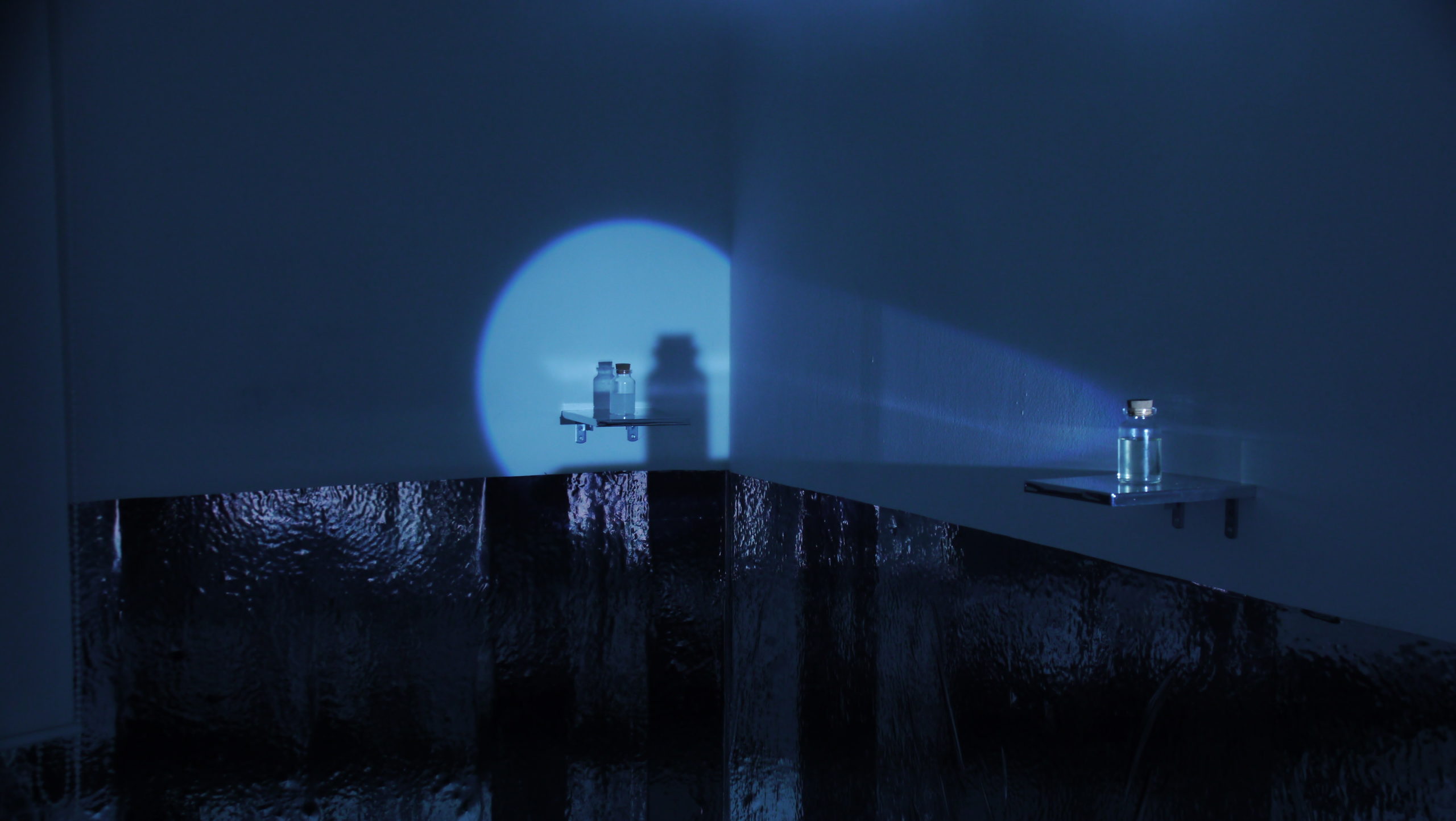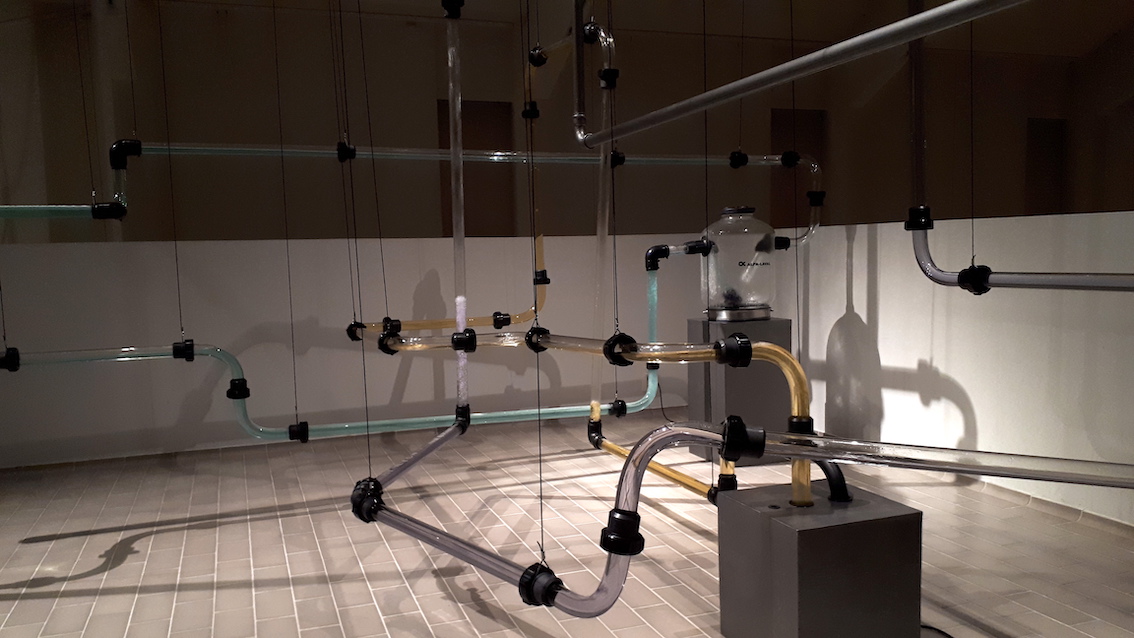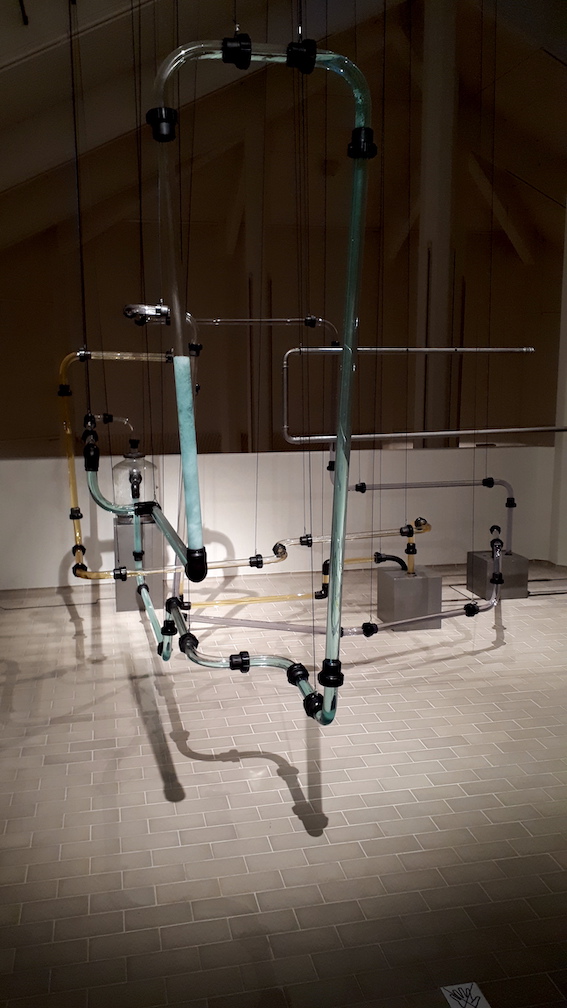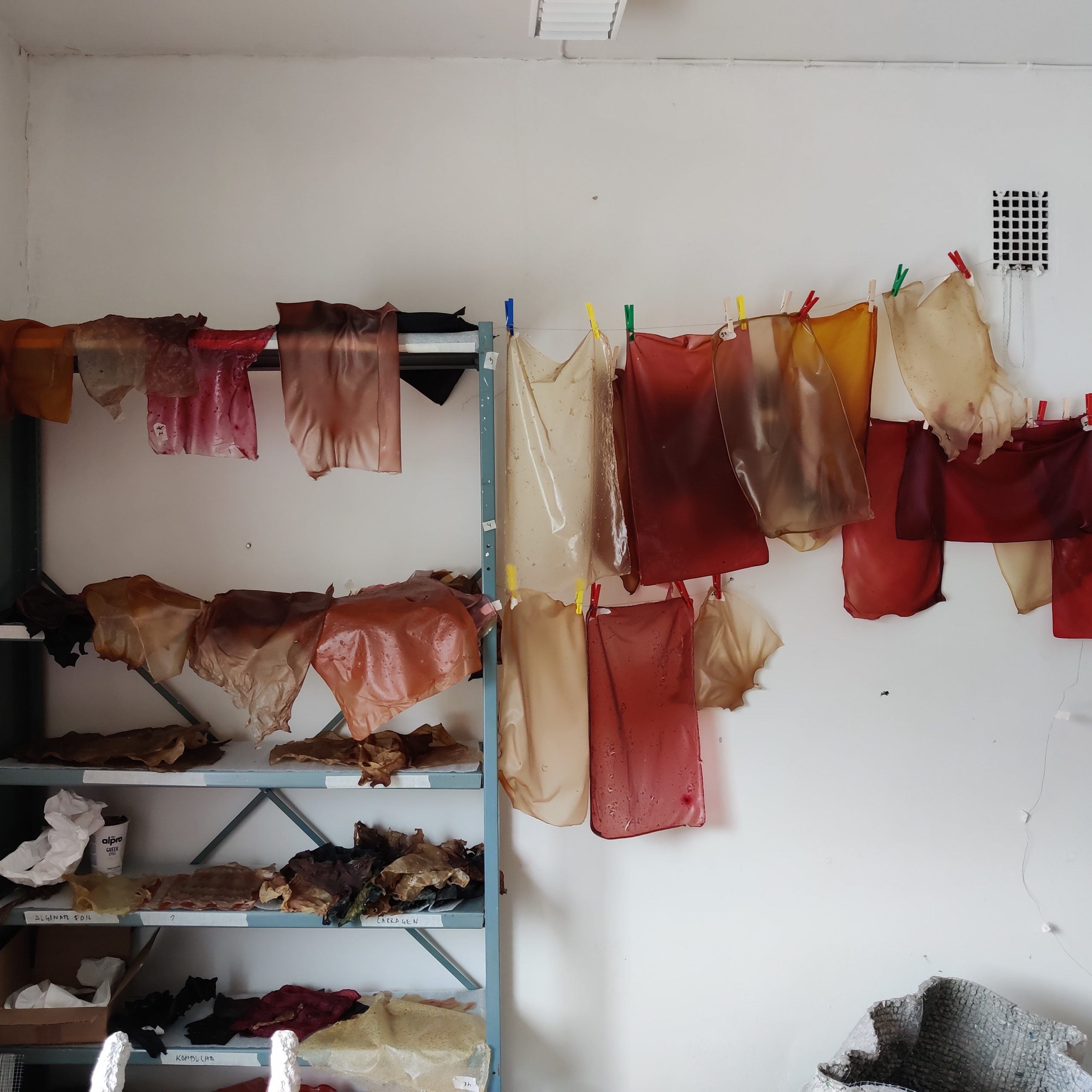8 Apr 2021
Interview
Eeva-Liisa Puhakka: Seoul, smell, and sensory memories
Eeva-Liisa Puhakka currently lives and works in Ruotila, near Kouvola in Finland. She moved into an old family house during spring 2020, as the world was getting used to what was to become an extraordinary year. She is currently working at art center Taidekeskus Antares where she is experimenting on creating her own bioplastics. Although the COVID-19 pandemic has somehow forced her to change her rhythm of working, it has, nevertheless, been a busy couple of years. In 2019, she spent three months in Seoul on a residency funded by the Finnish Cultural Foundation. 2020 found her in Spain; after traveling back to Finland, she has taken part in an environmental exhibition during summer 2020, creating a large-scale public sculpture made from metal tubes and, also, spent nearly three months in ARE residency in the Netherlands during autumn.

Leave the body, leave the mind, 2019, SeMA Nanji, Seoul, Korea.
Seoul
Seoul was an interesting and inspiring city, Eeva-Liisa says, where everything worked well and on schedule, moving around was easy, and people were friendly. Eeva-Liisa had not been to Seoul before and did not know what to expect. What she found was a big city with massive buildings and a perfectly organised residency area near a big park, contemporary art of the highest level, and stimulating conversation. Eeva-Liisa found that Seoul activated her, motivated her to find exhibitions and openings to attend, as the recently appointed residency staff, albeit friendly, did not provide a set schedule of things to do and places to visit.
What was indeed pleasant was the social aspect of the residency. Six international and twenty local artists got along well and became friends. The residency period ended with a group exhibition. Eeva-Liisa participated with an installation investigating smell, the smell of death. The installation consisted of a space within which the audience had to step, to be confronted with four levels of the smell of a decomposing dead animal. The four smells ranged from the pleasant smell of a rose through the very unpleasant, ending with a very mild smell of just bones, investigating concepts of the afterlife. Although Eeva-Liisa has been interested in smells for many years, this particular residency gave her research a certain taboo twist. In South Korea, smells are generally frowned upon.
Smell
Eeva-Liisa’s interest in smell goes back several years. For five to six years, while living in Berlin, she was working with an artist collective called Scent Club Berlin. All the members of the collective were interested in smells in various ways. The sense of smell is such a strong, primitive sense which brings on sensory memories from as far back as one’s childhood. Together with the collective, Eeva-Liisa initiated smell dating workshops during which the audience were assigned dates based on the smell of their sweat after a 15-minute aerobics class. The projects of the collective were mostly playful, whereas Eeva-Liisa’s personal work around smell researched, for example, the smells of death and fear.
Ecology and bioplastics
One of the interests that have followed Eeva-Liisa’s art for years is the desire to make art that respects the environment. During her ARE residency in the Netherlands, Eeva-Liisa got acquainted with a local artist who inspired her to make her own bioplastics and kombucha leather. In her current experimentations, Eeva-Liisa is making bioplastics using seaweed from Asia, coloured with various local organic ingredients such as tomato, raspberry, beetroot, blueberry, and clove. In the future, Eeva-Liisa would like to experiment with local seaweed and other plant-based materials.
Nature and locality
The relationship between humans and other animals is of interest to Eeva-Liisa as well as the relationship between humans and their surrounding environment. Some of Eeva-Liisa’s work deals with the rural population decreasing. For example, some of her works use imagery of empty barns and abandoned milking machines. She often contrasts and compares nature and rural communities with technology.
Since she moved to rural Kouvola, she has also been interested in the local community and history, especially some of the local religious cults that she has been hearing and reading about.

Milky Way, Kouvola Art Museum, 2020.
Future plans
Aspects of these long-term interests are bound to make an appearance in Eeva-Liisa’s future exhibitions. In May 2021, she is looking to open a solo exhibition at Kouvola Art Museum, marking her three-year position as appointed artist of the city of Kouvola. The exhibition will feature works about farms, a sound installation of grey crows, kinetic sculptures of bird wings and tails, photographs of cows, and a video installation about a local Christian-influenced cult active between the 20s and the 60s. Also, the installation from Seoul investigating the smell of death will be reinstalled in Kouvola. The works of the exhibition will deal with Kouvola and the larger area, yet they have been inspired by Eeva-Liisa’s time in South Korea, the Netherlands, Spain, and Germany.
AA: Memory’s unique connection to smell is commonly acknowledged. Do you have any specific smells that are important to you through the memories they invoke?
E-LP: The smell of rubber tires is one of my favourite smells. I grew up on a farm and my father used to take me with him when he had to visit the machine (tractor) shops in the nearby town. When the store is full of big tractor tires, the smell is pretty intense. The smell of a humid and musty cellar brings to me memories of my grandmother and her cellar. It also reminds me of the smell of homemade salty cucumbers, which is another favourite childhood smell.
It so happened that I visited Bulgaria at the same time in the beginning of June five years in a row to attend residencies and festivals. It is the time when the lime/linden trees blossom there, and the smell while walking on the streets is so strong and overwhelming. That smell became a sign of the beginning of summer to me.

Milky Way, Kouvola Art Museum, 2020.
AA: Investigating death through the sense of smell is somewhat unexpected. Does this make the uncomfortable topic easier to approach?
E-LP: I do hope so. While working with this topic I try myself to accept death as a normal process and event of our life – to put it into the big context of the ecosystem and cycle of life. Death is one of the last taboos in our society and a difficult topic to talk about. We don’t know how to deal with it. Although death should be dealt with the same care as birth.
AA: What materials are you currently using for your bioplastics? Are you trying to increase sustainability by exploring more local options?
E-LP: I have grown kombucha scoby to make leather from it, but mainly I am into making bioplastics out of different kinds of seaweeds. After the first few experiments, I decided to limit my experiments to plant-based materials. The next step would be to source more local materials, as I think the locality is an important factor.

Bioplastics from Eeva-Liisa’s studio, 2021.
Finnish Cultural Foundation’s residency programme is maintained and developed in collaboration with HIAP – Helsinki International Artist Programme.
Photos provided by the artist.
Read more:
